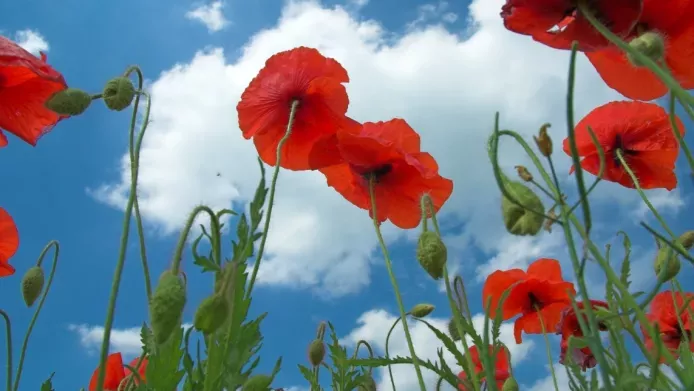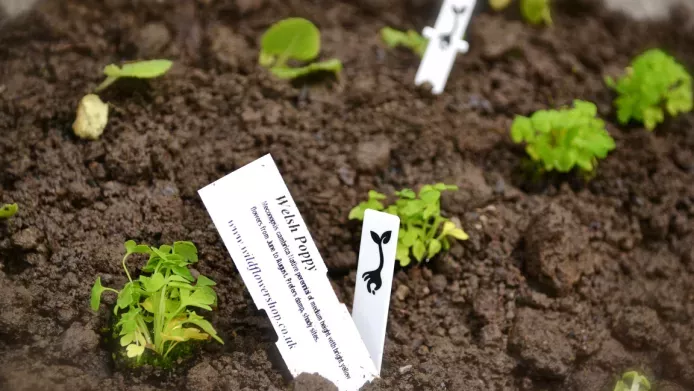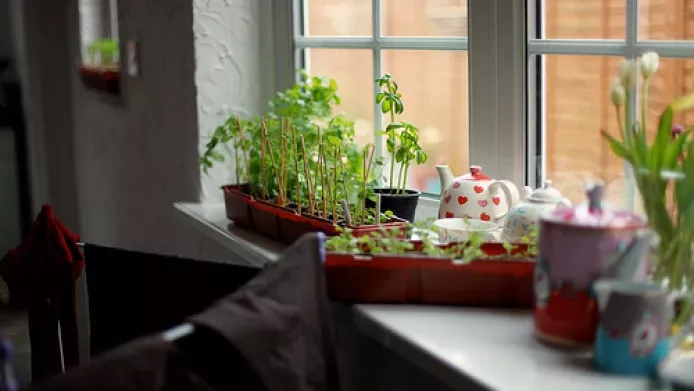It’s easy to transform your space with UK-native wildflowers.
Follow these tips to turn your seeds into sensational displays, whether they’re in pots, flower beds or an entire garden!

Here at Grow Wild, we give out thousands of wildflower seed kits every year to budding gardeners and groups all around the country. But don’t worry if you weren’t able to receive a Grow Wild kit – there are so many places to source wildflower seeds, so everyone can join the growing fun.
You can buy seeds from a local garden centre, DIY shop, supermarket, or online. Alternatively, you could check on social media to see if local wildflower growers are offering donations. You could even collect wild seeds yourself, but be careful: you shouldn't take seeds from rare or threatened plants, or those growing in conservation areas.
Read more on how to harvest and save seeds from wildflowers.
There are over 1,600 species of wildflower in Britain and Ireland. So there’s no shortage to choose from! You can buy packets containing seeds of a single wildflower such as oxeye daisy, but for a vivid and multi-coloured display you can buy mixtures of different seeds. Try mixing annuals, biennials and perennials for a long-lasting display – these refer to types of flowers that bloom at different times.
Annual wildflowers put on a show in their first summer and quickly produce seed, which then grows into new plants the following year. And so it goes on.
Biennial flowers grow in their first year but don’t flower and produce seeds until their second year, although some occasionally defy convention by acting like annuals! After producing seeds, these plants usually die in the same way as an annual.
Perennial flowers will wait to burst into flower in their second summer – and carry on for many years beyond.
You might think spring is the best time to sow your seeds, as the weather begins to warm up again – but if you’re willing to wait, you can sow in autumn just as easily. According to our wildflower seed expert, Dr. Chris Cockel, autumn sowing may even produce better results!
Spring
In spring, it's critical to water wildflowers in the ground regularly after sowing and while the seedlings are getting established in the first six weeks. You should aim to water your freshly sown wildflower space twice a week and more frequently in hot weather to stop the soil from drying out. Your seeds should germinate within a couple of weeks, depending on the weather.
Autumn
If you're sowing in autumn – around September or October is usually a good time – the process is almost the same as in spring. But once you’ve sowed your seeds, you will only need to water them once before you leave them over winter, when the seeds will be dormant. Come back to water them once the weather gets warmer and seedlings start showing.
Remember
We’re passionate about the importance of UK-native wildflowers! Always check the packet or ask sellers where their seeds are from to ensure you are buying and sowing UK-native plants.
If you’re in a rural or semi-rural area, you should be extra careful about which seeds you introduce, as new plants could upset the local balance of plants and wildlife. Ask your seller, and if in doubt, consult your local Wildlife Trust.
How to sow wildflower seeds in Autumn
Sowing wildflowers in the earth
These instructions are for sowing directly into the ground. Find tips on sowing in containers further down this page.

- A gardening fork, rake or spade
- A watering can or jug
- Wildflower seed mix
- Plant markers to label your new wildflower site
- Pick a spring or autumn day when the soil is neither too wet nor too dry.
- Your seeds need sun to grow, so choose a patch of ground that isn’t in the shade.
- Rake the soil so it's fine and crumbly, and remove any weeds, stones, or large clumps of compacted soil.
- Ideally, leave your prepared soil for about two weeks so any dormant weeds or grasses that come to life can be removed before you sow your seeds.
- Scatter your wildflower seeds over the soil by hand – a little at a time for an even spread.
- Top tip: to make spreading easier, mix seeds with a small amount of dry play sand or flour so you can see where you've sown them.
- Gently rake the soil again to just cover the seeds with a very thin layer (1 mm) of fine crumbly soil.
- Seeds need sunlight, so be careful not to bury them or they won't grow.
- Very gently, water the whole area using a watering can, taking care not to wash your seeds away.
- Label the area with your plant markers (you could make your own!) and don’t forget to include the sowing date.
Top tip
Opportunistic birds might come after your seeds before they’ve grown. Why not hang some old CDs around your flower patch? The shiny surface should scare the birds off safely.
Sowing wildflowers in containers
If you don’t have access to a patch of soil, don’t despair! Wildflowers will grow happily in containers, as long as they have enough space. They need room for their roots to grow and absorb nutrients and water, so it's best to go big or go home.
You can find large pots and planters at garden centres, or why not get creative and use an old sink, bathtub or even a boat? You can find disused items like these at reclamation yards or recycling centres, often cheaply or for free.

- A large container with holes in the bottom
- Stones or broken crockery
- Topsoil or multipurpose compost (peat free)
- A watering can or jug
- Wildflower seed mix
- Plant markers to label your container
- If your container doesn’t have any holes, you can carefully add them with a drill or sharp instrument.
- Place your container in your chosen sunny spot and add a few stones or pieces of crockery at the bottom to help with drainage.
- Fill the container with topsoil or peat-free compost, gently pressing it down to break up large lumps. Leave a space of around 25 mm at the top for watering.
- Sprinkle the seeds over the surface and cover with 1 mm of soil or compost.
- Label the container with your plant markers (you could make your own!) and don’t forget to include the sowing date.
- Keep the soil moist (but not soggy) and the seedlings should start to grow within a couple of weeks, depending on the time of year.
Top tip
When buying your compost, make sure it is peat free! Peat is a unique organic material which is an incredible ‘carbon sink’, meaning it stores carbon dioxide from the atmosphere. When we dig it up to use as compost, that carbon is released, impacting our environment.
How to Sow in a Container
Watch our video to hear Hannah's detailed instructions for sowing seeds in a container.